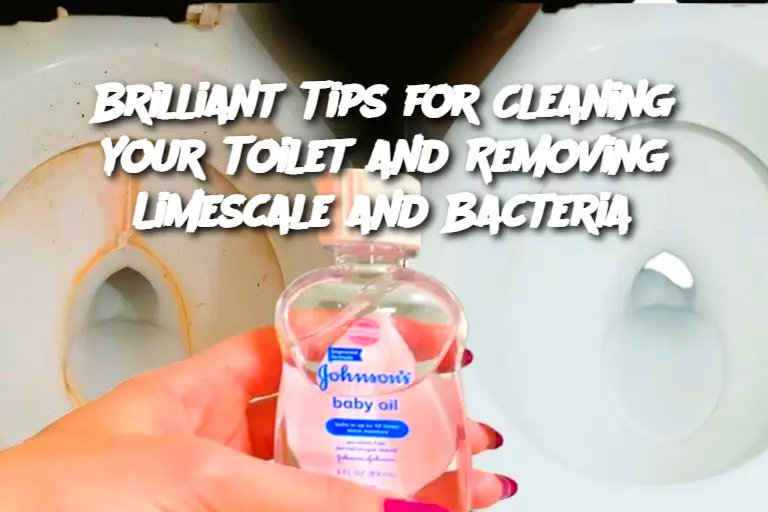ADVERTISEMENT
Introduction:
A clean and hygienic toilet is not only essential for maintaining the overall health of your home, but it also ensures a fresh environment for everyone in your household. One of the most common challenges in toilet cleaning is dealing with persistent limescale build-up and harmful bacteria. Limescale can be stubborn to remove, and bacteria thrive in moist environments, making your toilet a prime location for germs. However, with the right techniques and cleaning products, you can easily eliminate these issues and restore your toilet to its sparkling best. This article will guide you through effective methods to clean your toilet, remove limescale, and eliminate bacteria.
Ingredients:
White vinegar – A natural disinfectant that helps to dissolve limescale and disinfect surfaces.
Baking soda – An abrasive cleaner that can scrub away stains and grime.
Lemon juice – A natural acid that aids in breaking down limescale and adds a fresh scent.
Toilet brush – A necessary tool for scrubbing away dirt and stains.
Rubber gloves – For protection while handling cleaning products.
Optional: Essential oils (like tea tree or lavender) – For added freshness and antibacterial properties.
A bucket of warm water – To rinse the toilet and help dissolve cleaning agents.
Instructions:
Prepare the toilet for cleaning: Start by flushing the toilet to remove any loose debris. This will ensure a clean surface to begin with. Make sure the water level is low, so you have enough room to apply cleaning products.
Apply white vinegar and let it sit: Pour about 2 cups of white vinegar into the toilet bowl. Swirl it around with the toilet brush to ensure it covers the sides. Let the vinegar sit for at least 15 minutes. For stubborn limescale, you can leave it for up to an hour.
Add baking soda: After the vinegar has had time to work, add 1 cup of baking soda to the toilet bowl. The combination of vinegar and baking soda will react to break down limescale and grime. Let it fizz for a few minutes.
Scrub the toilet bowl: Using the toilet brush, scrub the sides of the toilet bowl, focusing on areas with visible limescale and stains. Pay close attention to the rim and under the bowl's lip, where bacteria often hide.
Disinfect the exterior: While the toilet bowl is being cleaned, take a microfiber cloth or a disposable wipe and use the remaining vinegar or a cleaning spray to disinfect the toilet seat, lid, and handle. Wipe down these surfaces thoroughly.
Rinse with warm water: Flush the toilet to rinse away the cleaning agents. This will also help to remove any remaining limescale or dirt.
Optional: Add lemon juice and essential oils: For a fresh scent and extra cleaning power, squeeze half a lemon into the bowl after cleaning. You can also add a few drops of antibacterial essential oils like tea tree or lavender for an added burst of freshness and bacteria-fighting power.
Serving and Storage Tips:
Frequency: Clean your toilet at least once a week to prevent the build-up of limescale and bacteria. If you live in an area with hard water, more frequent cleanings may be necessary to prevent limescale accumulation.
Storage: Store your cleaning supplies, including white vinegar, baking soda, and essential oils, in a cool, dry place. Ensure that cleaning products are kept out of reach of children and pets.
Variations:
ADVERTISEMENT
